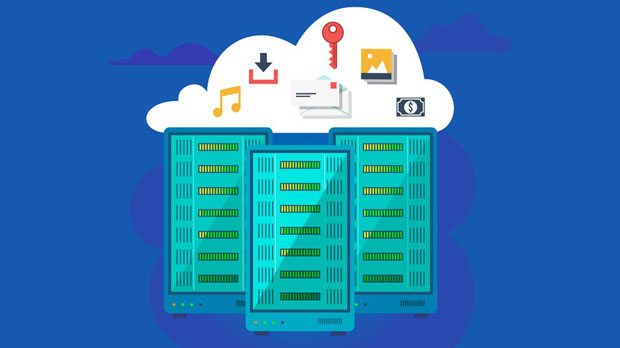Static residential proxies have become an indispensable tool in the digital world, particularly for businesses and individuals who need to access web data without being detected or blocked. In the PYPROXY review, various cases have showcased the successful application of static residential proxies in several industries. These proxies are highly effective in overcoming geo-blocking, ensuring secure and anonymous browsing, and streamlining online operations. This article explores key examples of how static residential proxies have been implemented successfully, offering a clear understanding of their potential and value to businesses. Introduction to Static Residential ProxiesStatic residential proxies are a type of proxy that uses real IP addresses assigned by Internet Service Providers (ISPs) to residential homes. These proxies are deemed "static" because they retain the same IP address for an extended period, unlike dynamic residential proxies, which change IPs frequently. This feature is particularly useful for tasks that require long-term, consistent access to websites or online services, without risking detection as a bot or facing IP bans.Businesses use static residential proxies to mask their true location or identity while accessing online data, such as conducting market research, automating business operations, or scraping websites for information. These proxies provide an additional layer of security and privacy, making them a valuable asset for various digital tasks. Case Study 1: E-commerce Market ResearchIn the e-commerce industry, businesses often need to track competitor prices, gather customer reviews, and analyze product offerings across different regions. Static residential proxies have proven to be highly effective in this domain. For instance, an e-commerce platform used static residential proxies to gather price and product information from various competitor websites. By using these proxies, the platform was able to avoid IP bans and CAPTCHA challenges that are commonly implemented to prevent data scraping.The success of this application stemmed from the proxies' ability to simulate traffic from multiple locations while maintaining the same IP address, allowing the business to collect data over an extended period without raising suspicion. This consistency provided valuable insights into market trends, which helped the business adjust its pricing strategy and improve customer engagement. Case Study 2: Social Media AutomationSocial media platforms are increasingly used by businesses for marketing, customer engagement, and brand awareness. To scale these operations, many companies rely on social media automation tools. However, these tools often face limitations, such as account suspension or shadow banning, when they are detected as bots. Static residential proxies provide a solution to this problem by allowing businesses to automate tasks like posting content, sending direct messages, or following/unfollowing accounts without being flagged.One company in the fashion industry used static residential proxies to automate its Instagram campaigns. The proxies allowed the company to perform actions from different locations, making the activity appear more organic and less likely to trigger account bans. As a result, the company successfully grew its online presence, engaging with a broader audience while keeping its operations under the radar. Case Study 3: Web Scraping for Data ExtractionWeb scraping is an essential practice for businesses in sectors like finance, travel, and real estate. It involves extracting data from websites to gather information such as stock prices, flight availability, or property listings. However, web scraping can trigger anti-bot measures, especially when done at a large scale. Static residential proxies play a crucial role in ensuring that web scraping efforts remain undetected and uninterrupted.For example, a financial services company used static residential proxies to scrape stock market data from financial news websites. The proxies enabled the company to rotate IP addresses efficiently, ensuring a constant flow of data while avoiding IP bans. By maintaining a stable IP address for a prolonged period, the company was able to run its scraping operations for months without encountering significant disruptions. Case Study 4: Ad Verification and Brand ProtectionIn the advertising industry, ensuring that ads are displayed properly and are not being misused by fraudulent parties is a growing concern. Static residential proxies are often employed for ad verification, allowing companies to monitor the placement of their ads across different websites and locations. This helps businesses detect any misrepresentation, fraud, or brand safety issues.A global brand protection agency utilized static residential proxies to conduct ad verification on a large scale. The agency was able to check where the ads were being displayed, ensuring that they were shown to the correct audience and on legitimate websites. By simulating traffic from different regions, the agency detected several fraudulent activities, including misdirected ads and unauthorized placement, ultimately saving the brand from significant reputational damage. Case Study 5: Accessing Geo-restricted ContentMany online services, such as video streaming platforms and news websites, restrict access to their content based on the user’s geographical location. Static residential proxies allow businesses and individuals to bypass these geo-restrictions by masking their real IP address with one from a different location. This is particularly useful for content creators, media professionals, and global businesses that require access to region-specific content for research or entertainment purposes.A media company used static residential proxies to access region-specific content on a popular streaming platform. The company needed to gather data on the performance of localized content to adjust its strategy for different markets. With the help of static residential proxies, the company could securely and anonymously access the content, gather relevant insights, and fine-tune its global media strategy. Benefits of Static Residential ProxiesThe primary advantage of using static residential proxies is their ability to maintain a consistent IP address, which helps businesses operate smoothly and efficiently. Unlike dynamic proxies, which change frequently, static proxies ensure long-term access to websites and services without raising suspicion.Some key benefits of static residential proxies include:1. Increased Anonymity and Privacy: The use of real residential IP addresses makes it harder for websites to detect proxy use, ensuring that browsing remains private and secure.2. Bypassing Geo-blocking: Static residential proxies enable users to access region-restricted content by disguising their location.3. Enhanced Scraping Capabilities: Static residential proxies allow businesses to scrape data without triggering anti-bot measures like IP bans or CAPTCHA challenges.4. Long-Term Consistency: Since static proxies use the same IP address for extended periods, they are ideal for tasks that require persistent access to websites.Static residential proxies have proven their worth across a range of industries, from e-commerce and social media marketing to web scraping and ad verification. The case studies reviewed in this article demonstrate the significant value these proxies provide in overcoming digital obstacles and enabling businesses to operate more effectively in the online world. As businesses increasingly rely on digital tools and strategies, the role of static residential proxies in ensuring seamless operations and protecting brand reputation will continue to grow. These proxies offer a secure, reliable, and efficient solution to some of the most common challenges faced in today’s online environment.
May 13, 2025



































































